15 Beautiful Evergreens That Fit Small Gardens Perfectly
Small gardens don’t have to miss out on the year-round greenery that evergreens bring. With so many compact varieties available, you can enjoy rich color and structure without worrying about plants outgrowing your space. Here are some gorgeous evergreens that fit perfectly in smaller gardens while adding charm all year long.
This post may contain affiliate links, which helps keep this content free. Please read our disclosure for more info.
Dwarf Alberta Spruce (Picea glauca ‘Conica’)
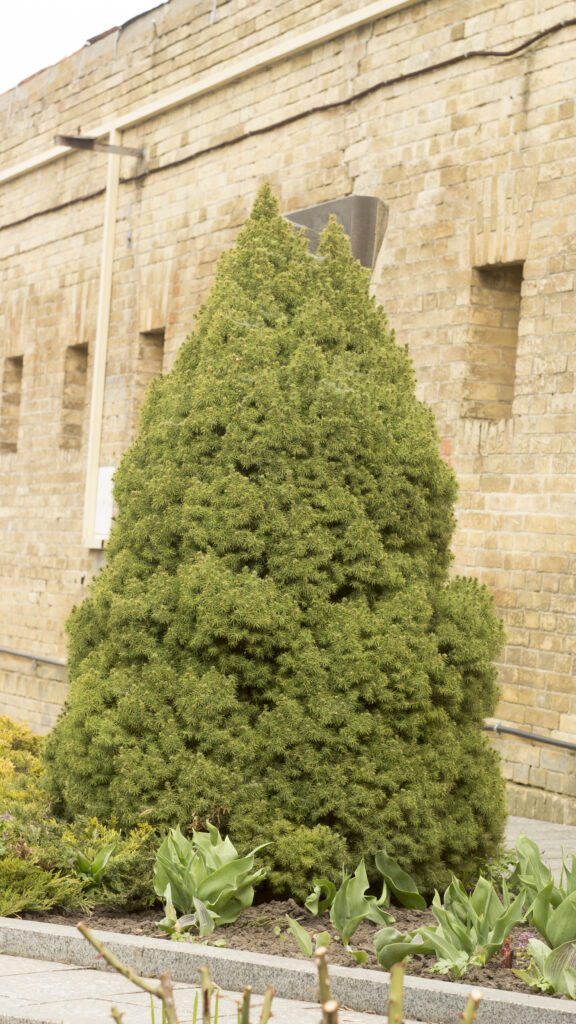
The Dwarf Alberta Spruce is a favorite for small gardens because of its naturally conical shape and slow growth. Its dense, bright green needles hold their color well throughout the year, creating a neat and tidy look with very little maintenance. Since it grows only a few inches each year, it’s easy to keep in scale with compact outdoor spaces.
This spruce also works beautifully in containers, where it can act as a living decoration on patios or porches. It’s hardy enough to handle cold winters, and its formal shape makes it a popular choice for entryways. A pair of these evergreens can frame a doorway and instantly create structure and balance.
Japanese Holly (Ilex crenata)
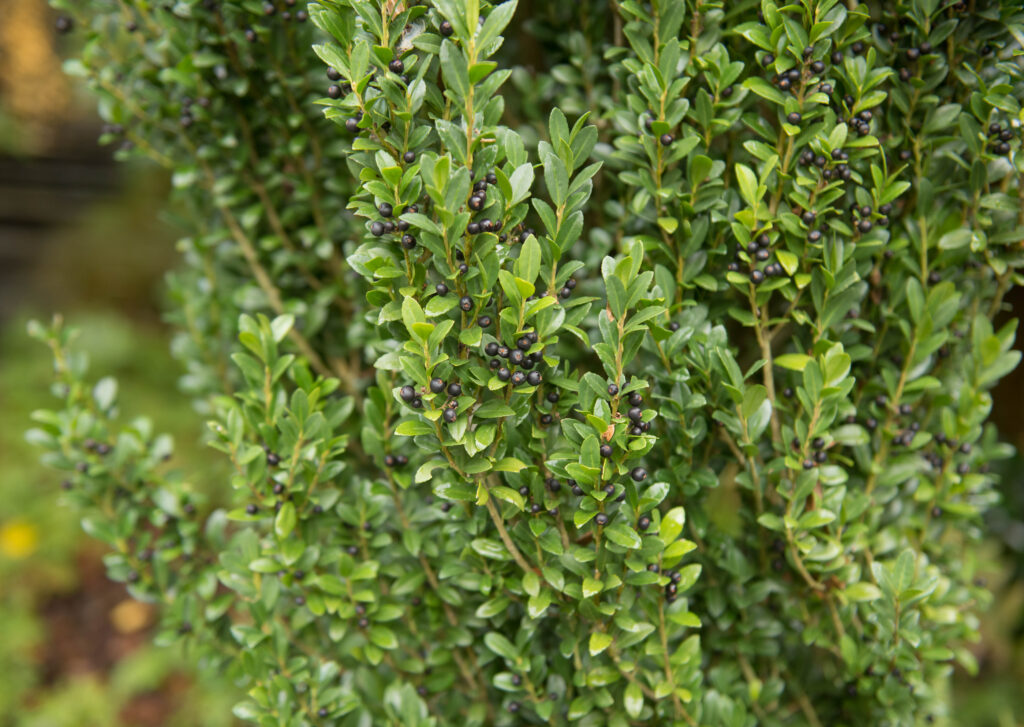
Japanese Holly is often used as an alternative to boxwood because of its small, glossy leaves and dense growth. It forms tidy mounds or hedges that can be clipped into almost any shape. Since it stays compact, it works especially well in small garden borders or even as a foundation planting.
Unlike traditional holly with spiky leaves, this one has a softer look, making it easy to combine with flowering plants. Many gardeners also use it to create a sense of order in small yards, where space is at a premium. The plant tolerates a variety of soil types and is generally low-maintenance once established.
Boxwood (Buxus sempervirens)
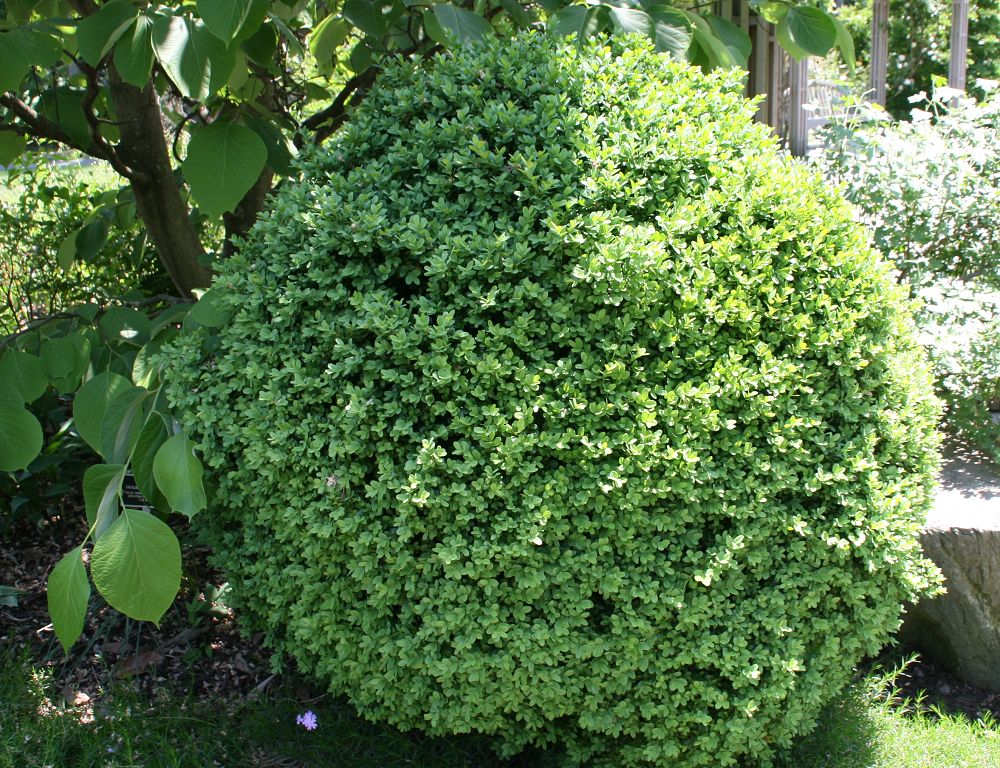
Boxwood has been a garden classic for centuries, valued for its ability to hold form and stay green all year long. Its evergreen leaves are small and glossy, giving it a refined texture. In a small garden, boxwood can be clipped into spheres, borders, or even playful shapes for visual interest.
Because it tolerates pruning so well, it’s one of the most versatile plants for limited spaces. It works equally well as a low hedge to edge flowerbeds or as a stand-alone accent. With regular trimming, you can keep it compact and tailored to fit neatly into your garden’s design.
Dwarf Hinoki Cypress (Chamaecyparis obtusa ‘Nana Gracilis’)
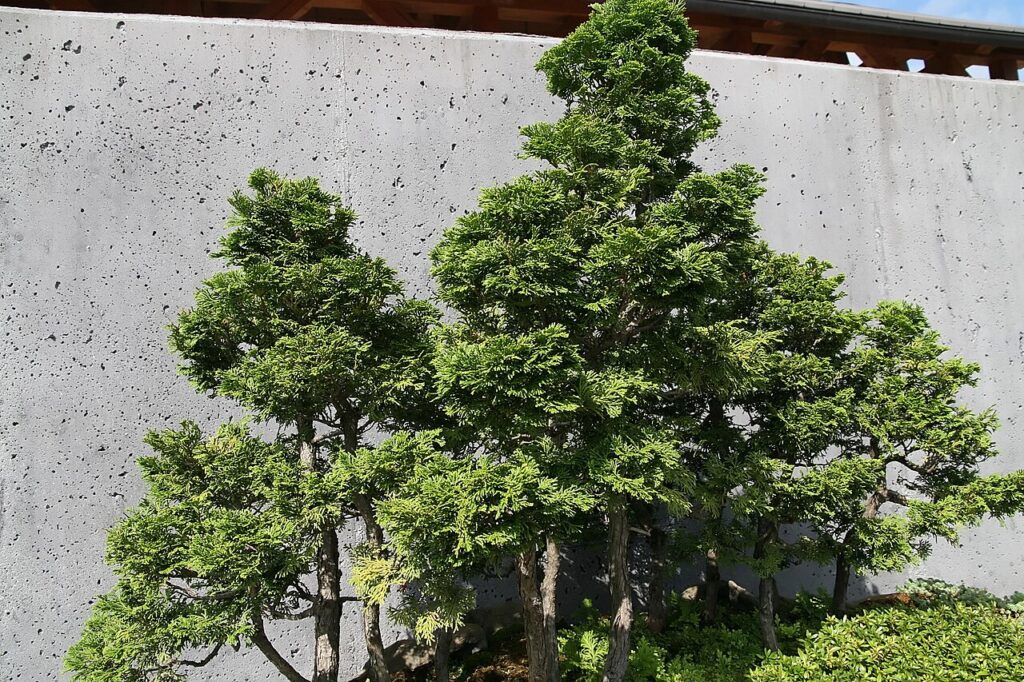
The Dwarf Hinoki Cypress has a graceful appearance with its fan-shaped sprays of dark green foliage. Its growth habit is naturally layered, giving it a textured, almost sculptural quality. This makes it an ideal choice for gardeners who want a plant that looks interesting without needing frequent trimming.
It grows slowly, so it remains compact for many years, making it perfect for rock gardens or small landscape beds. In addition to its beauty, it provides year-round structure and looks especially striking against lighter-colored plants. Many people also use it in Asian-inspired gardens, where its natural form fits seamlessly into the design.
Sky Pencil Holly (Ilex crenata ‘Sky Pencil’)
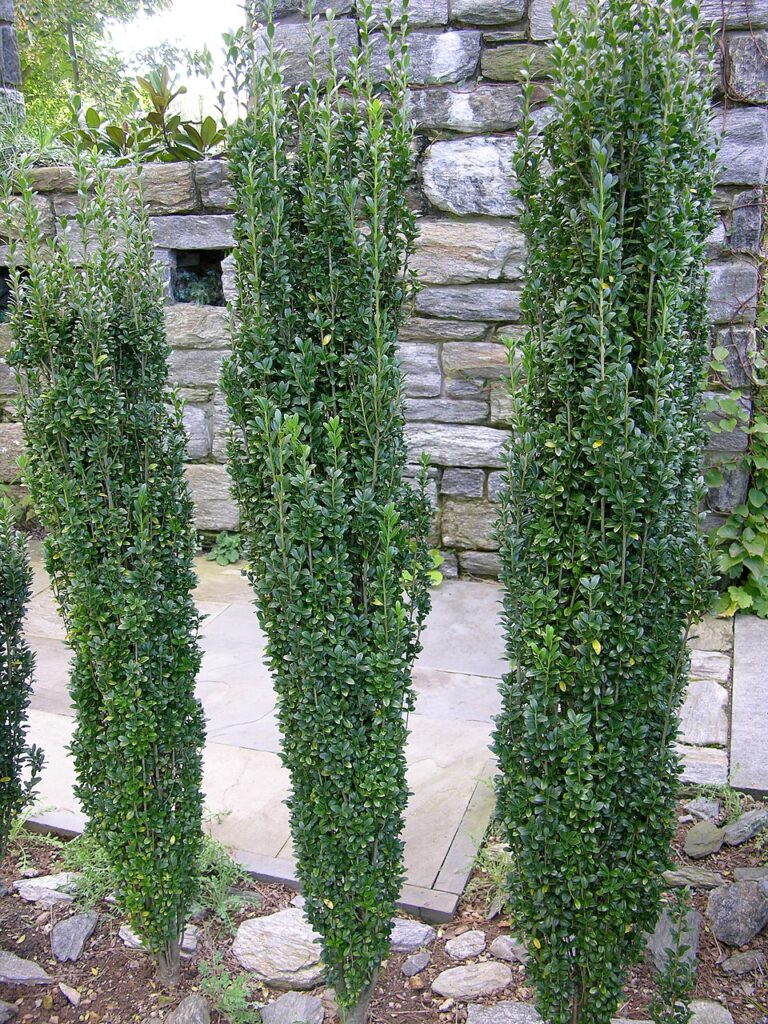
Sky Pencil Holly stands tall and narrow, which is ideal when garden space is limited. Its upright growth means it can add vertical interest without spreading out and taking up valuable ground space. The glossy leaves stay green throughout the year, creating a clean, elegant look.
This variety is especially popular for framing pathways or highlighting corners of small yards. Since it grows in such a narrow column, it can even be planted in rows to form a living screen. Its unique growth habit makes it one of the most space-efficient evergreens for compact gardens.
Dwarf Mugo Pine (Pinus mugo var. pumilio)
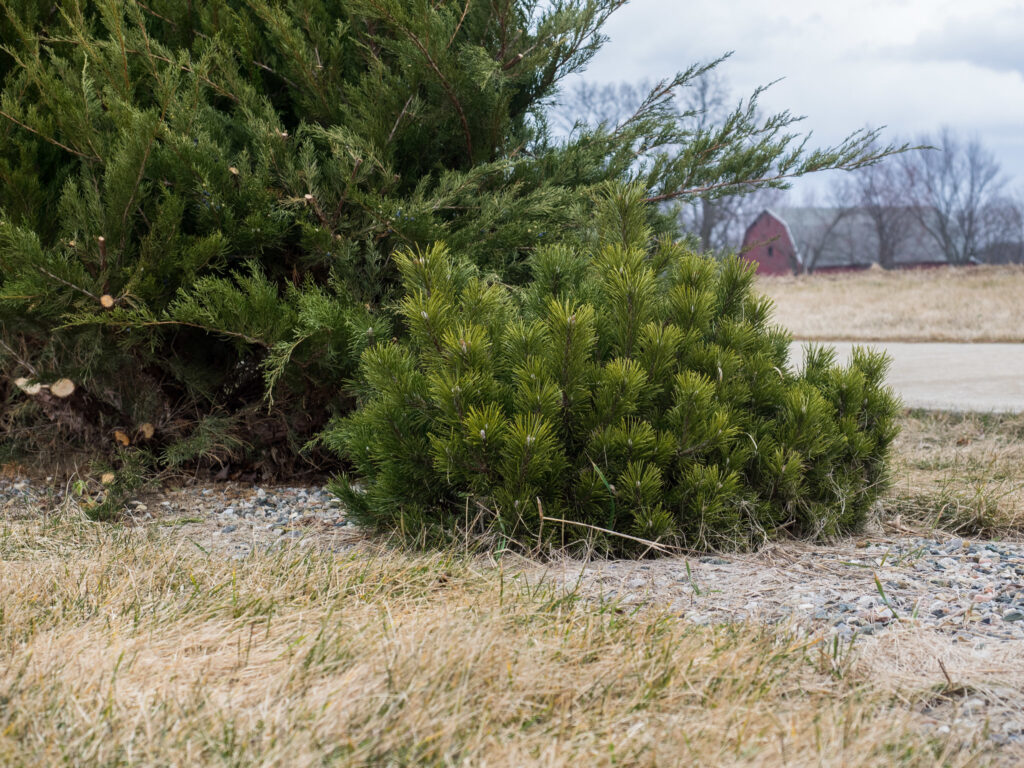
The Dwarf Mugo Pine is a sturdy, compact evergreen with a rounded form. Its deep green needles give it a lush look, and the plant’s low growth habit keeps it from overwhelming small spaces. It grows slowly and maintains a neat shape with little pruning required.
Because it thrives in poor soil and tolerates wind, it’s a reliable option for less-than-ideal sites. It also works well in rock gardens, where its rugged texture complements stones and gravel. Once established, it is very low-maintenance and adds a touch of mountain charm to small landscapes.
Winter Gem Boxwood (Buxus microphylla var. japonica ‘Winter Gem’)
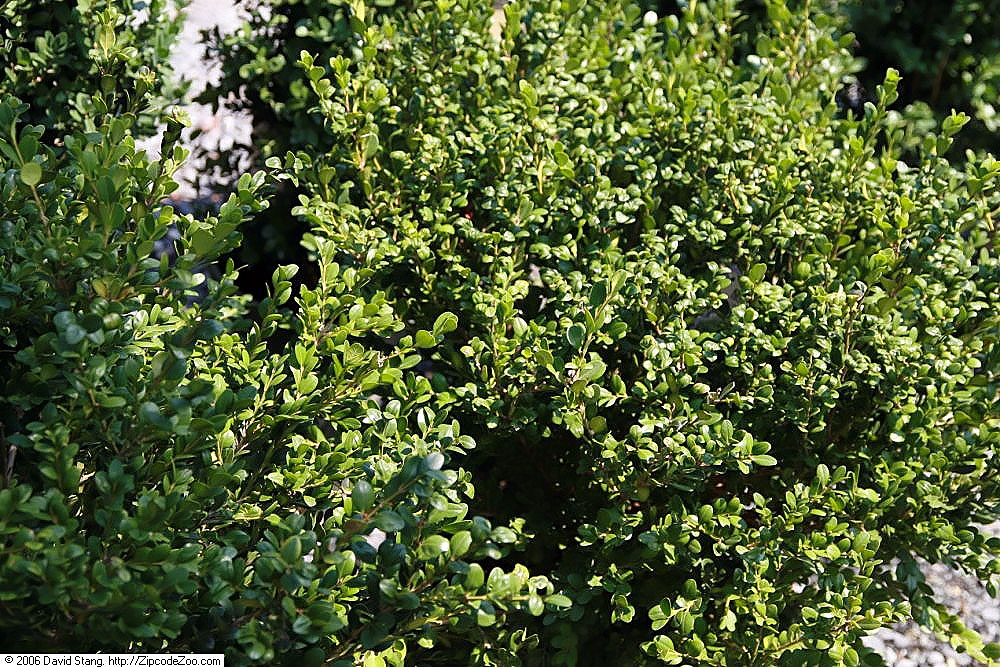
Winter Gem Boxwood lives up to its name by staying fresh-looking even in the coldest months. Its leaves are slightly larger and rounder than traditional boxwood, giving it a softer appearance. It forms dense, rounded mounds that fit neatly into borders or small foundation beds.
Because of its adaptability, this variety works in sun or part shade and is fairly easy to grow. Many gardeners appreciate that it holds up well in both hot summers and cold winters. It can be used as an evergreen anchor in flower beds, where seasonal blooms come and go around it.
Bird’s Nest Spruce (Picea abies ‘Nidiformis’)
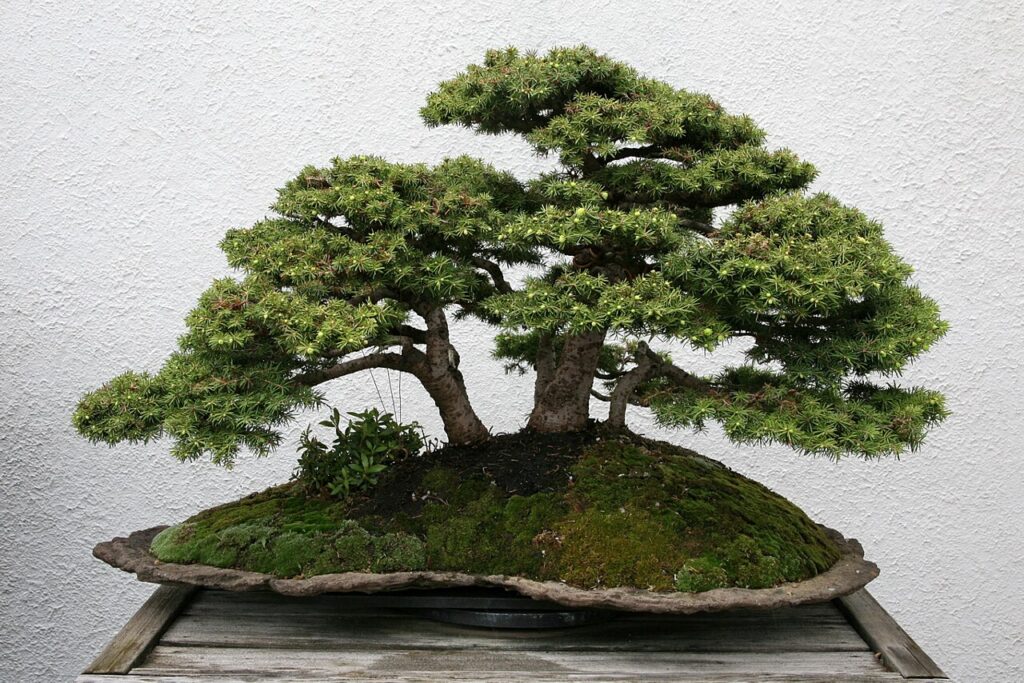
Bird’s Nest Spruce gets its name from its flattened, rounded form with a depression in the center. Its branches grow outward in a layered fashion, creating a unique nest-like shape. This makes it an attractive focal point in a small garden.
Because it stays relatively low and wide, it can soften corners or act as ground-level structure beneath taller plants. Its dense branches also provide year-round interest without requiring much care. It’s a particularly good choice for gardeners who want something unusual but still manageable in size.
Dwarf Korean Fir (Abies koreana ‘Silberlocke’)
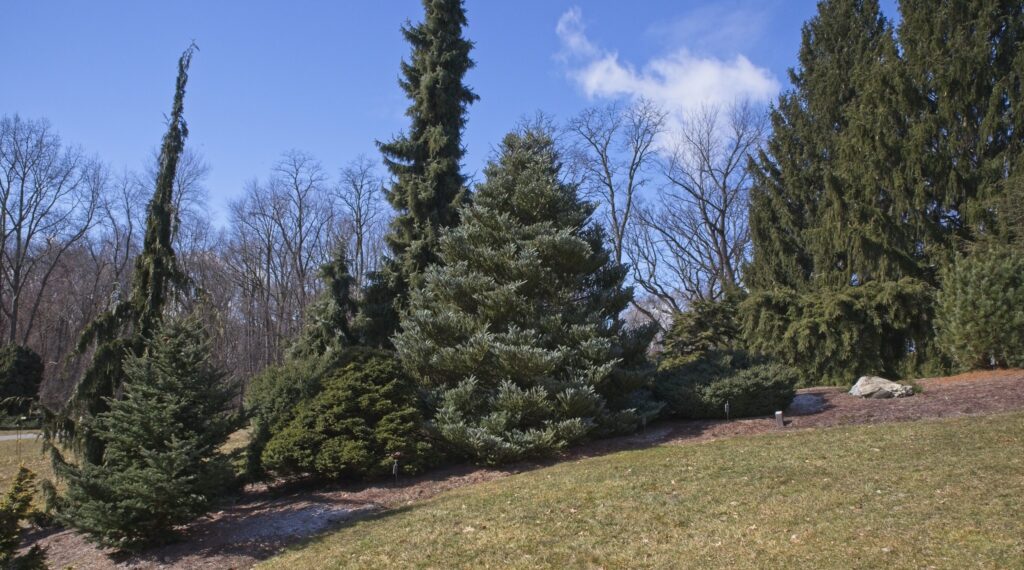
The Dwarf Korean Fir is admired for its silvery, upturned needles that give the plant a striking two-tone effect. As it grows slowly, it maintains a tidy shape that works well in smaller spaces. Its cones are also a decorative feature, adding visual interest when they appear.
This variety is especially appealing in mixed borders, where its color contrasts with deep green evergreens. It can also serve as a small specimen tree for those who want something eye-catching in their garden. Its unusual foliage makes it stand out while still staying compact.
Compact Oregon Grape (Mahonia aquifolium ‘Compacta’)
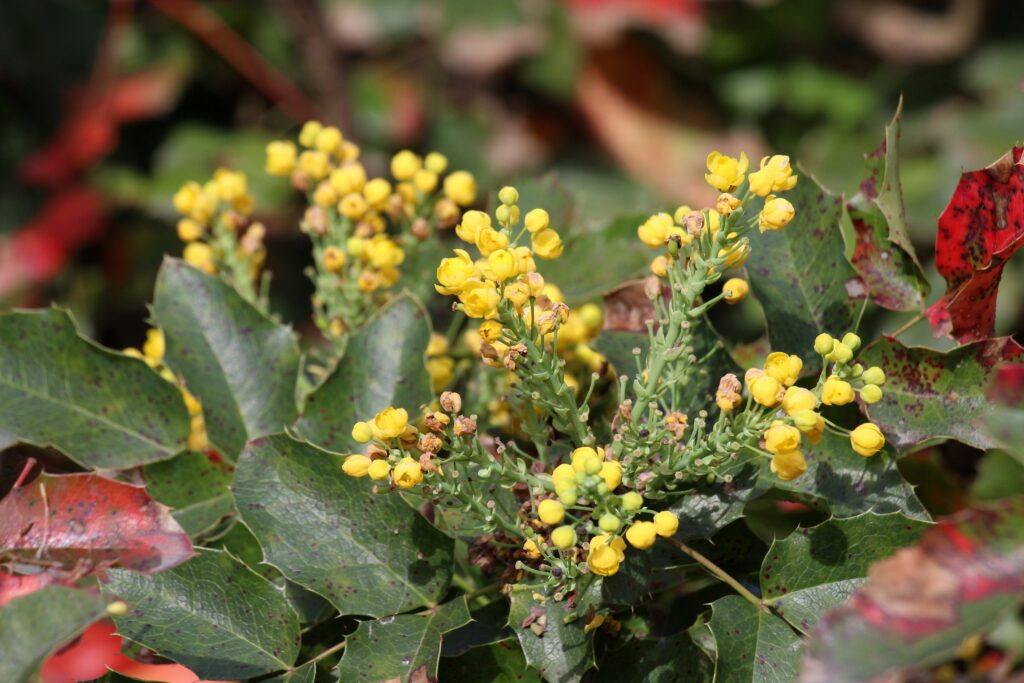
Compact Oregon Grape has leathery evergreen leaves that take on red and bronze tones in cooler months. In spring, it produces clusters of bright yellow flowers, which later turn into dark blue berries. This adds both seasonal color and wildlife value to a small garden.
Since it tolerates shade well, it’s a great choice for spots where other evergreens struggle. Its neat size makes it useful as a foundation plant or a small shrub border. Birds are often attracted to the berries, adding another layer of life to the garden.
Little Gem Magnolia (Magnolia grandiflora ‘Little Gem’)
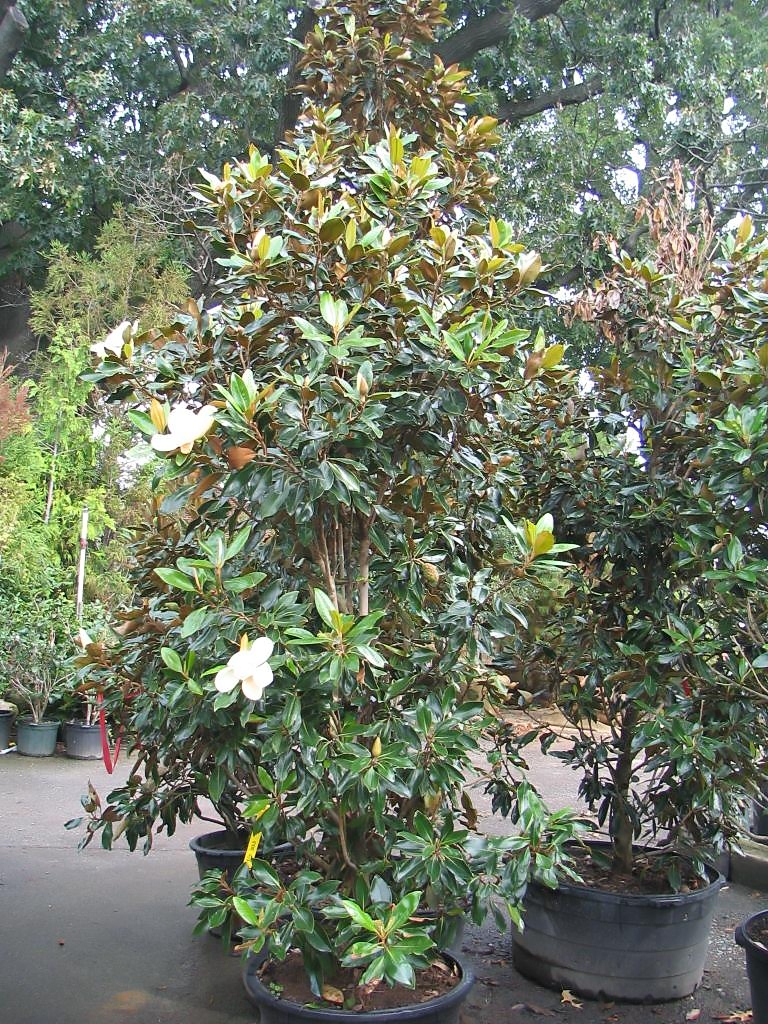
Little Gem Magnolia offers the look of the classic southern magnolia but in a more compact form. Its glossy, evergreen leaves are backed with a soft brown fuzz, giving them a distinctive texture. The tree also produces fragrant white flowers that are smaller but still eye-catching.
This magnolia works well as a small ornamental tree, reaching a manageable height that fits into modest yards. It adds a touch of elegance without overwhelming the space. Since it’s evergreen, it provides beauty all year long, even when not in bloom.
Yew (Taxus baccata ‘Repandens’)
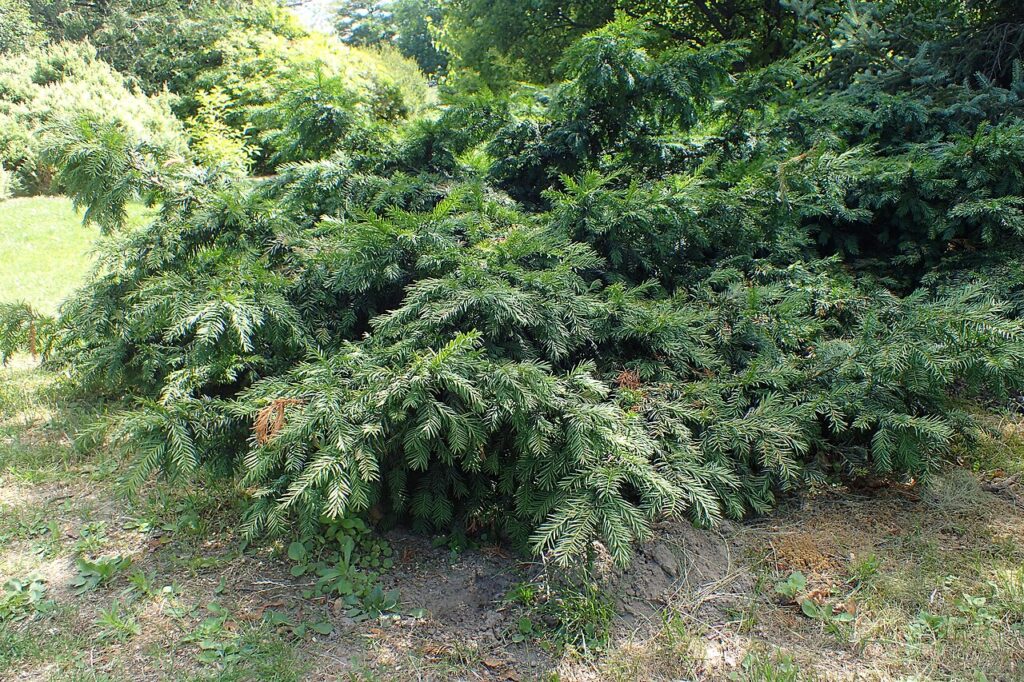
The spreading form of Repandens Yew makes it different from upright varieties. Its arching branches and deep green needles create a soft, flowing shape. This makes it ideal for covering ground or draping over slopes in smaller spaces.
Yews are also very adaptable, tolerating sun, shade, and different soil conditions. In a small garden, this flexibility allows them to be used in a variety of spots. With light pruning, they can be shaped as needed without losing their natural charm.
Silver Korean Fir (Abies koreana ‘Silver Show’)
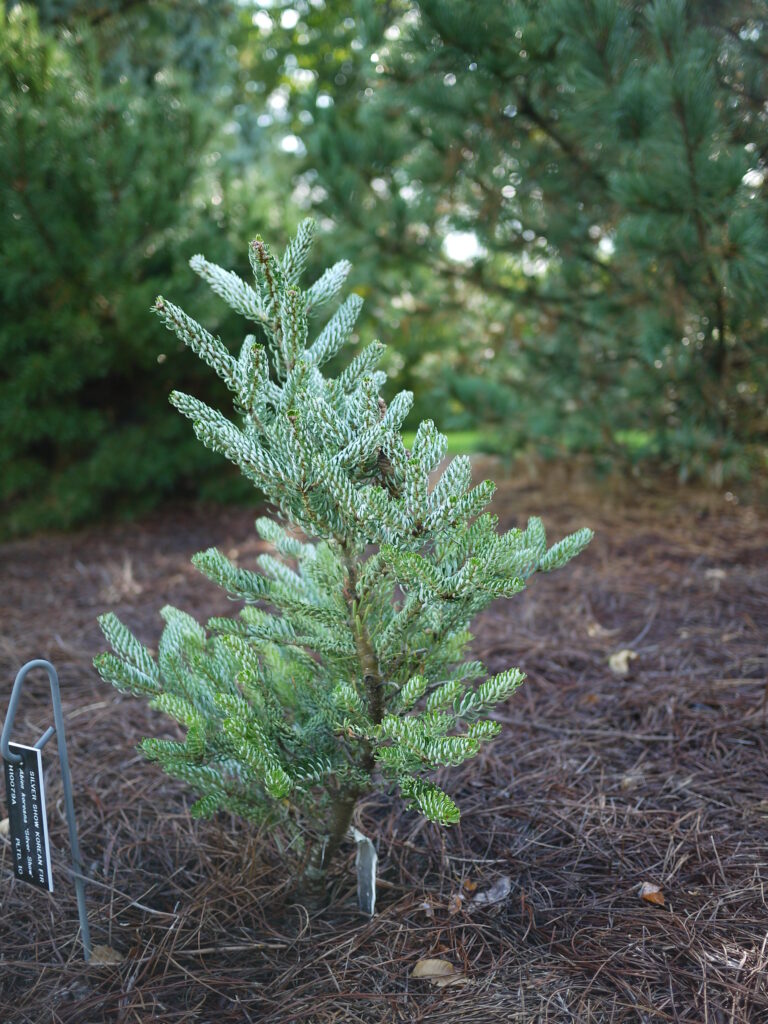
Silver Korean Fir shines in the garden with its silvery-white needle undersides. This shimmering effect catches the light and adds brightness to compact spaces. Like many dwarf firs, it grows slowly and stays small, making it manageable.
Its upright form and decorative cones make it a standout in mixed plantings. It brings texture and color even in the winter months when other plants fade. Gardeners often use it as a focal point in limited spaces because of its unique appearance.
Japanese Pieris (Pieris japonica)
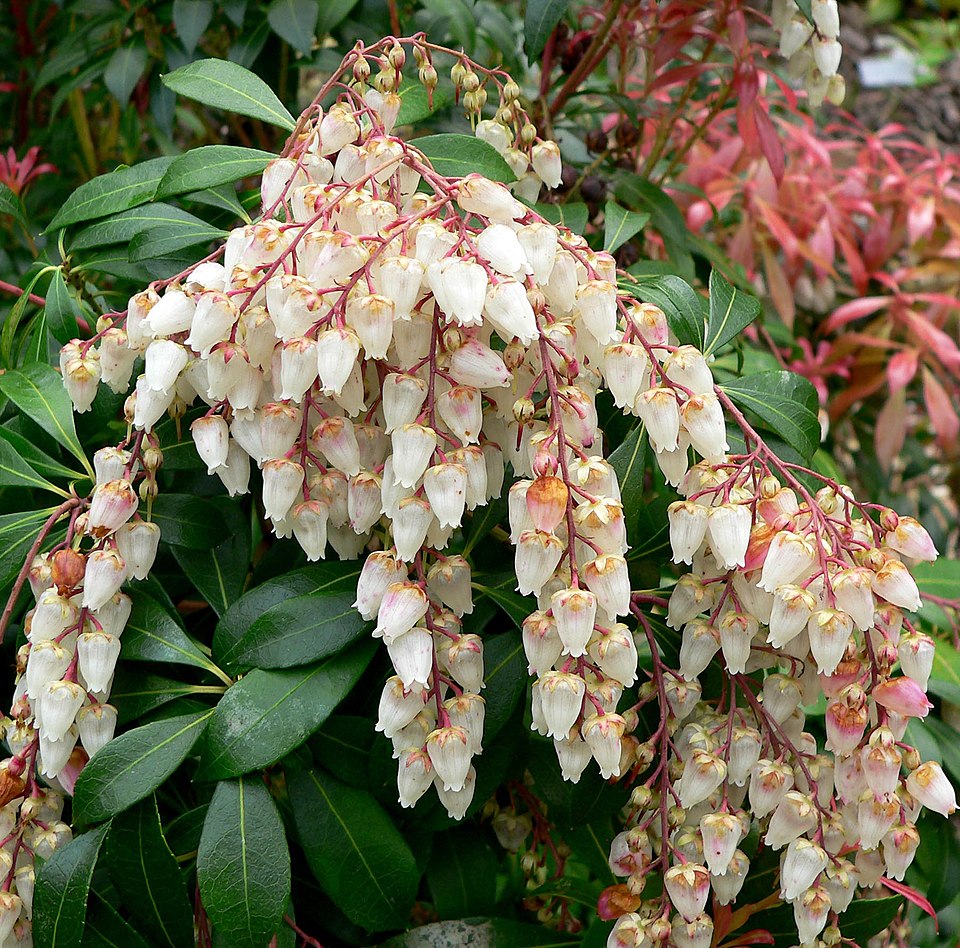
Japanese Pieris is a broadleaf evergreen with glossy leaves and cascading clusters of white or pink flowers in spring. The new growth often emerges in shades of bronze or red, adding seasonal variation. It stays compact, making it well-suited for small gardens.
This shrub thrives in partial shade and pairs well with azaleas and rhododendrons. Its year-round foliage ensures the garden always has structure, while its flowers provide a seasonal highlight. It’s also a reliable choice for adding a touch of refinement in compact plantings.
Compact Laurel (Prunus laurocerasus ‘Otto Luyken’)
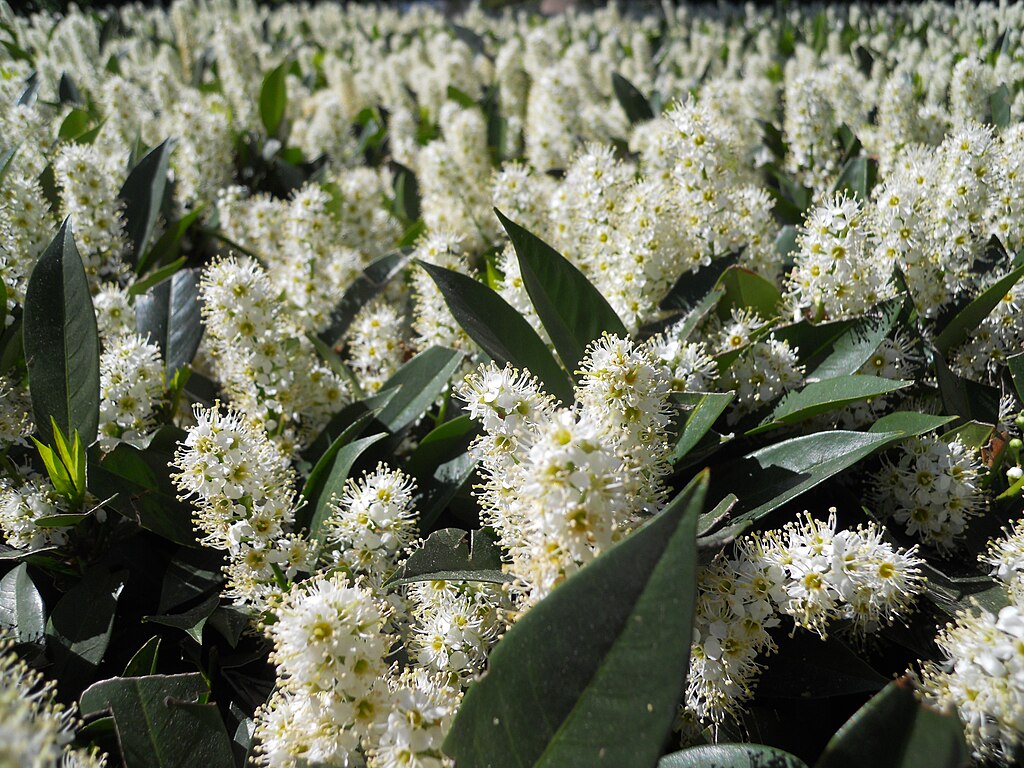
Otto Luyken Laurel is a smaller version of the common cherry laurel, growing in a tidy, mounded shape. Its narrow leaves stay glossy and green throughout the year, keeping the garden fresh even in winter. In spring, it produces fragrant white flower spikes.
This variety stays low and spreads gradually, making it perfect for hedges or foundation plantings in small spaces. Its adaptability to sun or shade means it works in many different spots around the garden. Once established, it requires very little maintenance, making it a practical evergreen option.
This article originally appeared on Avocadu.
